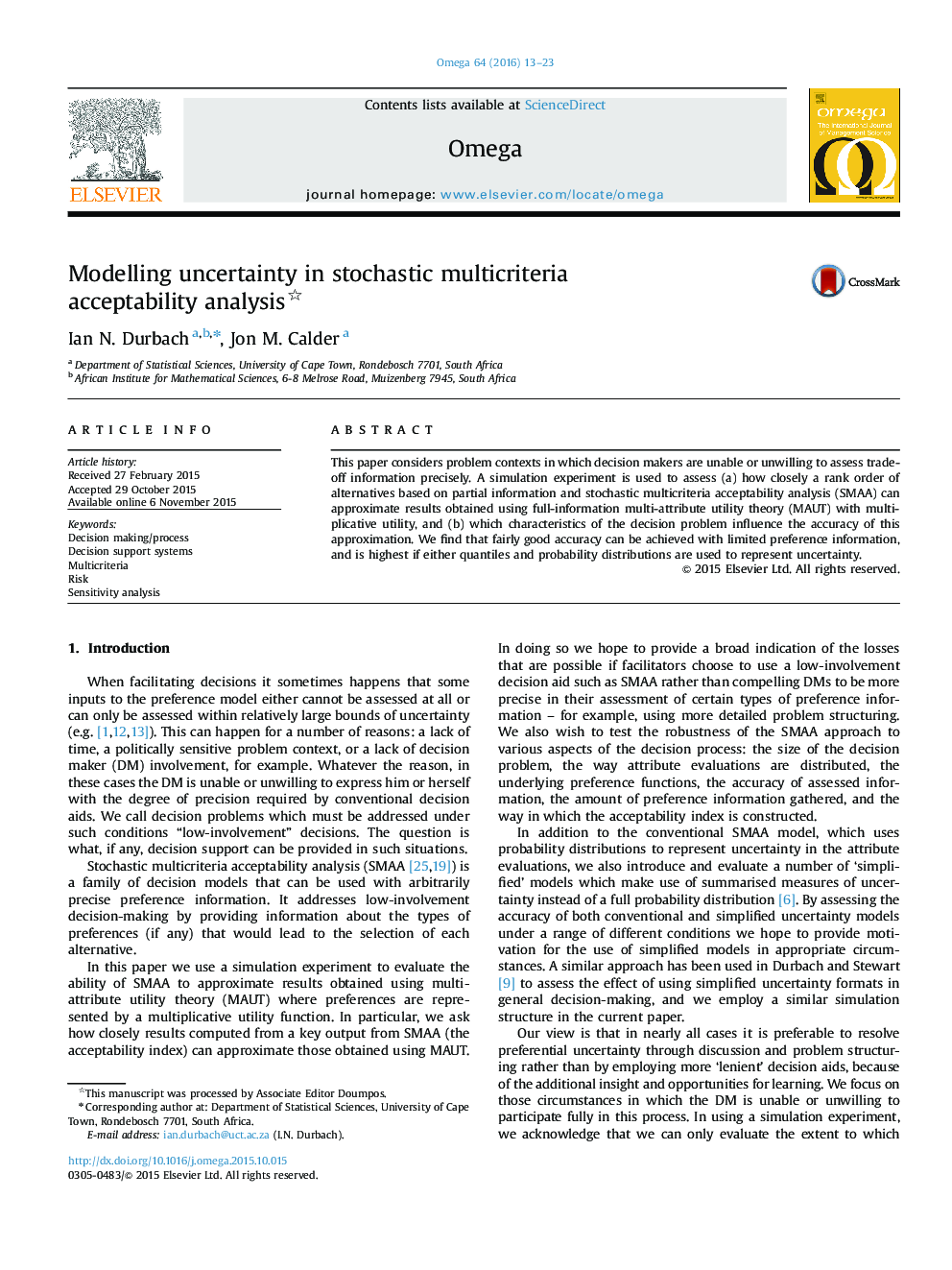| Article ID | Journal | Published Year | Pages | File Type |
|---|---|---|---|---|
| 1032351 | Omega | 2016 | 11 Pages |
•Considers problems where decision makers are unable to assess trade-off information precisely.•Uses simulation to assess whether SMAA can approximate results obtained using utility theory.•SMAA can give good results if some trade-off information is given and uncertainty is assessed with no error.•SMAA acceptability indices are best used as a shortlisting tool.•Good accuracy is obtained using quantiles to represent uncertainty.
This paper considers problem contexts in which decision makers are unable or unwilling to assess trade-off information precisely. A simulation experiment is used to assess (a) how closely a rank order of alternatives based on partial information and stochastic multicriteria acceptability analysis (SMAA) can approximate results obtained using full-information multi-attribute utility theory (MAUT) with multiplicative utility, and (b) which characteristics of the decision problem influence the accuracy of this approximation. We find that fairly good accuracy can be achieved with limited preference information, and is highest if either quantiles and probability distributions are used to represent uncertainty.
